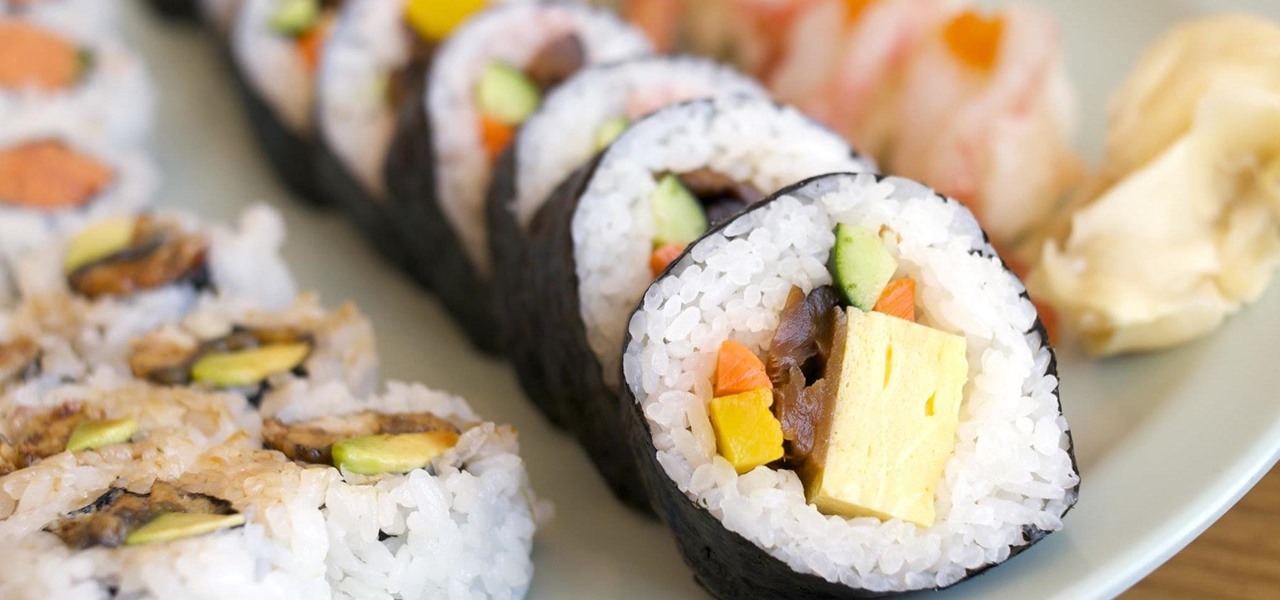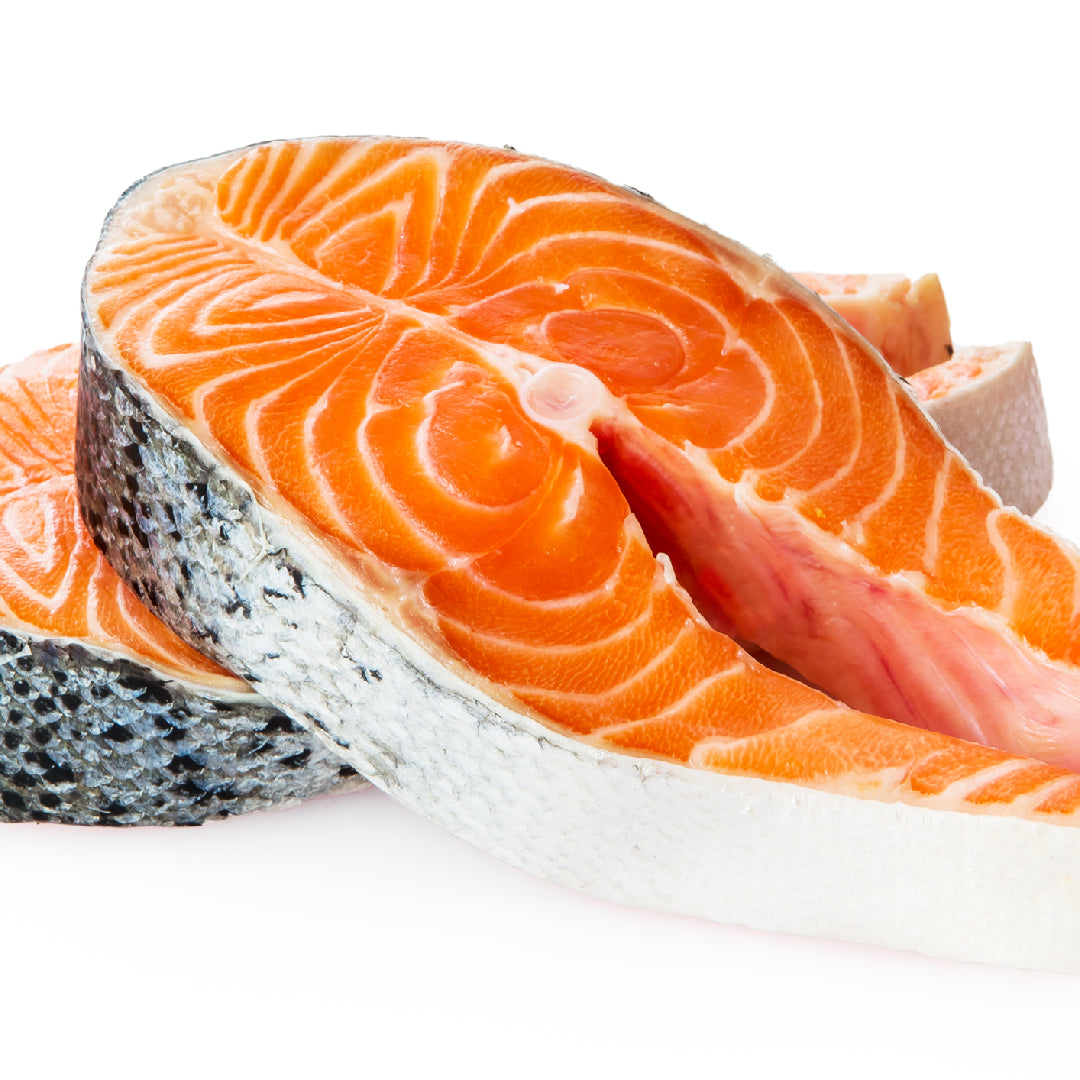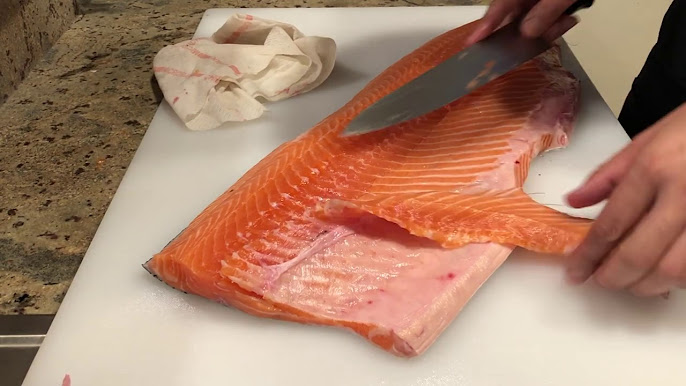To make salmon sashimi, select fresh salmon, pat dry, and slice thinly for serving. Enjoy this fresh and delicious dish at home with proper preparation techniques.
Making salmon sashimi is a simple and rewarding process that allows you to enjoy the delicate flavors of high-quality salmon in the comfort of your own kitchen. By following some easy steps and using the right ingredients, you can create a restaurant-quality dish that will impress your guests and satisfy your cravings for this popular Japanese delicacy.
Whether you are a beginner or a seasoned home cook, making salmon sashimi is a fun and fulfilling culinary experience that you can enjoy anytime. So, let’s dive into the world of homemade salmon sashimi and elevate your dining experience with this elegant dish.

Credit: www.reddit.com
Selecting The Right Salmon
To ensure a safe and delicious salmon sashimi, select high-quality, sushi-grade salmon from a trusted fish market or a reputable retailer. Look for a firm texture and vibrant color, which indicates freshness. To make salmon sashimi at home, it’s crucial to use fish that is specifically labeled as safe for raw consumption.
Choosing The Best Salmon
When selecting salmon for sashimi, choose fresh, high-quality cuts with vibrant color and a clean, ocean-like scent.
Farm-raised Vs. Wild Salmon
Comparing farm-raised and wild salmon for sashimi, farm-raised salmon generally has a milder flavor and a fattier texture, while wild salmon offers a more pronounced taste and leaner profile.
Understanding Sashimi-grade Salmon
Sashimi-grade salmon refers to fish that has been handled and stored with specific protocols to ensure safety for raw consumption. Look for labels indicating “sashimi-grade” for confidence in quality.
“` This HTML content provides an informative and concise guide on selecting the right salmon for making salmon sashimi. It highlights the importance of choosing the best salmon, explains the differences between farm-raised and wild salmon, and discusses the concept of sashimi-grade salmon for safe consumption. By following these guidelines, you can prepare delicious and safe salmon sashimi at home.Preparation And Curing
To make Salmon Sashimi, start by selecting fresh salmon, then pat it dry and rinse it thoroughly. Store it in a freezer bag and freeze for at least seven days to a month to kill parasites. Enjoy safe and delicious homemade raw salmon sashimi with these simple preparation and curing steps.
Purchasing Fresh Salmon
When buying fresh salmon for sashimi, ensure it is sushi-grade and fresh with no fishy odor.
- Look for bright, shiny skin and firm flesh.
- Ask your fishmonger for sushi-grade salmon.
- Wild salmon should be frozen beforehand to kill parasites.
Curing For Homemade Sashimi
Curing salmon for sashimi involves lightly salting the fish to enhance its flavor and texture.
- Gently salt the salmon and let it cure for about 30 minutes.
- Rinse off the salt and pat the salmon dry with paper towels.
- Wrap the salmon in plastic wrap and chill in the refrigerator for a few hours.
Freezing For Safety
To ensure the safety of homemade sashimi, freezing the salmon is crucial to kill any potential parasites.
- Rinse the salmon under running water before patting it dry.
- Store the salmon in a freezer bag and freeze for at least seven days to a month.
- This method effectively kills parasites, making the raw salmon safe to eat.
Slicing And Serving
Properly slicing and serving salmon sashimi is crucial to ensuring the utmost enjoyment and aesthetic appeal of this exquisite dish.
Proper Slicing Techniques
When preparing salmon sashimi, it’s vital to utilize proper slicing techniques to achieve delicate, thin slices for an optimal sashimi experience. Follow these essential steps:
- Gently rinse the salmon under cold water to remove any remaining scales or residue.
- Pat the salmon dry with paper towels to ensure a clean and dry surface for slicing.
- Using a sharp, long-bladed knife, such as a sashimi or slicing knife, angle the blade diagonally against the flesh of the salmon to create thin, even slices.
- For best results, slice the salmon against the grain to enhance its tender texture and flavor.
Accompaniments And Dipping Sauces
Pairing your freshly sliced salmon sashimi with complementary accompaniments and dipping sauces can elevate the overall dining experience. Consider the following options:
- Wasabi: A pungent and spicy condiment traditionally served with sashimi to add a fiery kick.
- Soy sauce: A classic dipping sauce that provides a savory umami flavor to complement the delicate taste of the salmon.
- Pickled ginger: Also known as gari, this sweet and vinegary condiment serves as a palate cleanser between bites of sashimi.
- Ponzu sauce: A citrusy and tangy soy-based dipping sauce that adds a refreshing zing to the sashimi.

Credit: food-hacks.wonderhowto.com
Tips For Homemade Salmon Sashimi
Making your own salmon sashimi at home can be a rewarding and delicious experience. However, there are a few important tips to keep in mind to ensure that your homemade salmon sashimi is of the highest quality and safe to consume. In this section, we will discuss some key considerations when it comes to the quality, storage, and shelf life of your homemade salmon sashimi.
Quality Considerations
When making salmon sashimi at home, it is crucial to choose high-quality ingredients. Here are a few important factors to consider:
- Always opt for sushi-grade salmon as it is specifically designed to be consumed raw.
- Look for farm-raised salmon that has been fed a special diet to ensure freshness and reduce the risk of parasites.
- Ensure the salmon you choose has a fresh smell and bright, firm flesh.
- If possible, purchase the salmon from a reputable fishmonger or supplier to guarantee its quality.
Storage And Shelf Life
Proper storage is essential to maintain the freshness and quality of your homemade salmon sashimi. Here are some tips:
- Rinse the salmon under running water to remove any impurities.
- Pat the salmon dry using a paper towel.
- Store the salmon in a freezer bag, ensuring it is tightly sealed.
- Place the bag in the freezer and freeze for at least seven days to a month. This helps kill any potential parasites in the fish.
- When ready to use, thaw the salmon in the refrigerator overnight.
Following these storage guidelines will help ensure that your homemade salmon sashimi remains safe to consume and maintains its quality.
By considering the quality factors and implementing proper storage practices, you can enjoy delicious and safe homemade salmon sashimi at any time. Whether you are a sushi enthusiast or simply looking to try something new, making your own salmon sashimi can be a fun and rewarding culinary adventure.
Additional Resources And Recommendations
Enhance your salmon sashimi experience with additional resources and top recommendations for making it at home. Explore expert tips on sourcing fresh salmon, proper preparation techniques, and essential accompaniments for a delectable dish. Elevate your culinary skills with these valuable insights.
When it comes to making delicious salmon sashimi at home, it’s always helpful to have additional resources and recommendations at your disposal. Whether you need recipes and tutorials to hone your skills or want to engage in community discussions and seek advice, these resources can take your salmon sashimi-making journey to the next level.
Recipes And Tutorials
If you’re looking for step-by-step instructions and inspiration, there are various online platforms that offer incredible recipes and tutorials. Some popular options include:
- Cook With Dana – This YouTube channel provides a pound salmon sashimi recipe with soy sauce, ponzu sauce, wasabi, pickled ginger, and lemon juice.
- Aubrey’s Kitchen – In just 5 minutes, you can learn how to make salmon sashimi with dark soy sauce, sesame oil, sesame seeds, rice vinegar, and dashi granules.
- Chef Jet Tila – This YouTube video demonstrates the entire process, starting from salting the salmon to cutting it for sashimi. You can also discover various accompaniments to enhance your salmon sashimi experience.
Community Discussions And Advice
If you want to connect with fellow salmon sashimi enthusiasts and seek advice from experienced individuals, you can participate in community discussions. Here are some platforms where you can find valuable insights:
Remember, when it comes to making salmon sashimi at home, it’s crucial to ensure safety. Properly rinsing the salmon under running water, patting it dry, and storing it in a freezer bag for at least seven days to a month can help kill parasites and make it safe to consume raw. If you prefer to skip this step, using farm-raised salmon labeled as “sashimi grade” can also ensure safety. Now that you have access to these additional resources and recommendations, you can confidently embark on your salmon sashimi-making journey and enjoy this delicious dish from the comfort of your own kitchen.

Credit: globalseafoods.com
Frequently Asked Questions On How To Make Salmon Sashimi
How To Make Salmon Sashimi Safe At Home?
To make salmon sashimi safe at home, rinse the salmon under running water, pat dry, and store it in a freezer bag. Freeze for at least seven days to a month to kill parasites. Enjoy safely prepared raw salmon at home.
#sushi
Can You Make Sashimi With Regular Salmon?
Yes, you can make sashimi with regular salmon, but it is important to ensure it is fresh and safe to eat raw. Store-bought farm-raised salmon is a safer choice than wild salmon due to parasites. Make sure to properly rinse and freeze the salmon for at least seven days to kill any potential parasites.
Then, you can prepare the sashimi by cutting the salmon into thin slices.
Can You Make Sashimi At Home?
Yes, you can make sashimi at home. Rinse fresh salmon, pat dry, and store in a freezer bag. Freeze for at least seven days to a month to kill parasites. Enjoy safely prepared raw salmon at home.
Do You Have To Cure Salmon For Sashimi?
Yes, for wild salmon, curing is required, and freezing is highly recommended to make it safe for sashimi. For farm-raised salmon, some may require freezing, and curing remains optional.
Conclusion
Making salmon sashimi at home is simple and enjoyable. By following the proper steps and using high-quality ingredients, you can create a delicious and safe dish to enjoy with friends and family. Remember to source fresh, high-grade salmon and adhere to safety guidelines for a remarkable dining experience.


Leave a Reply